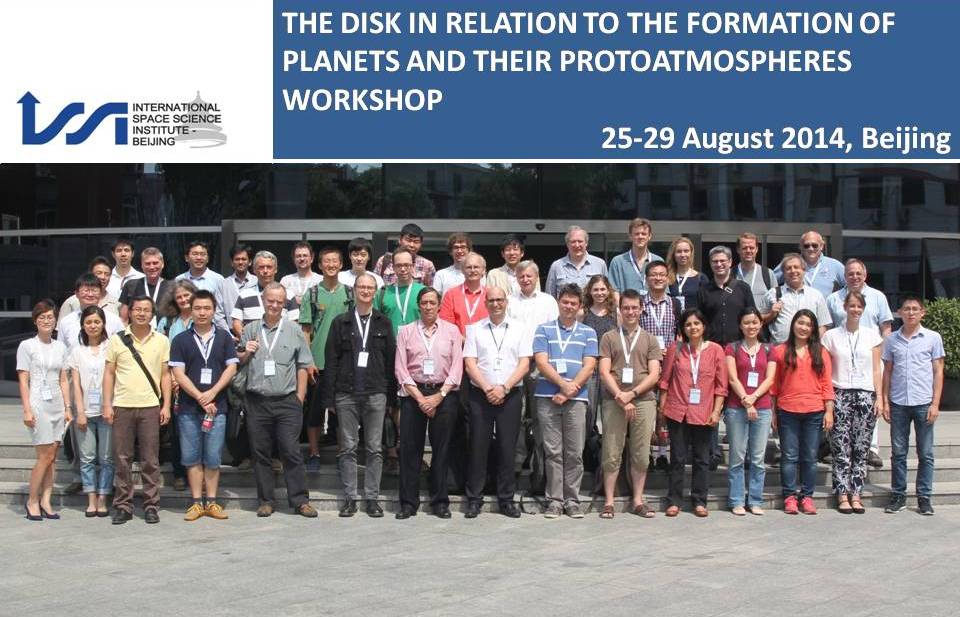The ISSI-BJ/ISSI joint Workshop on the Disk in Relation to the Formation of Planets and Their Protoatmospheres was successfully held at ISSI-BJ on August 25-29, 2014.
One great challenge of modern astrophysics is the understanding of the origin and formation of planets around young stars, and of the resulting diversity of planetary objects and their protoatmospheres. It is assumed and for one part observed that planets form inside the circumstellar disks which are one of the characteristics of young stars. But a coherent global picture of how planets and their atmospheres form and evolve inside those disks is yet to emerge.
The workshop, with the contribution of the best specialists in that field, revisited all available scenarios for the joint evolution of disks, planets and atmospheres in the light of the most recent observations and of available models. It tried to establish the most likely scenarios for this co-evolution and from that will seek to improve our understanding of the formation and early evolution of the different types of planets.
After a short introduction the workshop reviewed in depth what has been achieved in the research on circumstellar disks and exoplanets, focusing on the following topics: formation of planets in protostellar disks, emergence of planetary systems, disk dispersal, atmosphere formation and evolution as well as debris disks and their evolution. The lively debates contributed to a very successful workshop where the participants critically yet constructively discussed the status quo of the research on the formation of planets and tried to give a future outlook on where future observations, facilities and models might lead us to.
A total of 39 leading scientists from USA (Harvard Smithsonian Center for Astrophysics, Princeton University, NASA, University of Arizona, University of California Observatories, Caltech), UK (University of Cambridge), Switzerland (University of Bern, the International Space Science Institute, Geneva Observatory), France (IRAP/UPS-CNRS, University of Paris-Sud), Germany (the German Aerospace Center,Thueringer Landessternwarte Tautenburg, Max Planck Institute for Astronomy Heidelberg) and China (National Space Science Center and Purple Mountain Observatory of the Chinese Academy of Sciences, Peking University, Tsinghua University, Nanjing University and ISSI-BJ) attended the workshop.
This meeting was convened by Willy Benz (University of Bern, Switzerland), Michel Blanc (IRAP/OMP, Toulouse, France), CHEN Ding (NSSC of CAS, Beijing, China), Maurizio Falanga (ISSI-BJ, China), Malcolm Fridlund (the German Aerospace Center, Berlin, Germany), Manuel Guedel (University of Vienna, Austria), Gregory Herczeg (Peking University, China), Helmut Lammer (Austrian Academy of Sciences, Graz, Austria), Doug Lin (University of California Observatories, Santa Cruz, USA), Michael R. Meyer (ETH, Zürich, Switzerland), Rafael Rodrigo (ISSI, Bern, Switzerland), and Stéphane Udry (Geneva Observatory, Geneva, Switzerland).
Following the Workshop, its output will be published as a volume in the Space Science Series of ISSI/ISSI-BJ by Springer, in parallel with the publication of the papers in Space Science Reviews.



